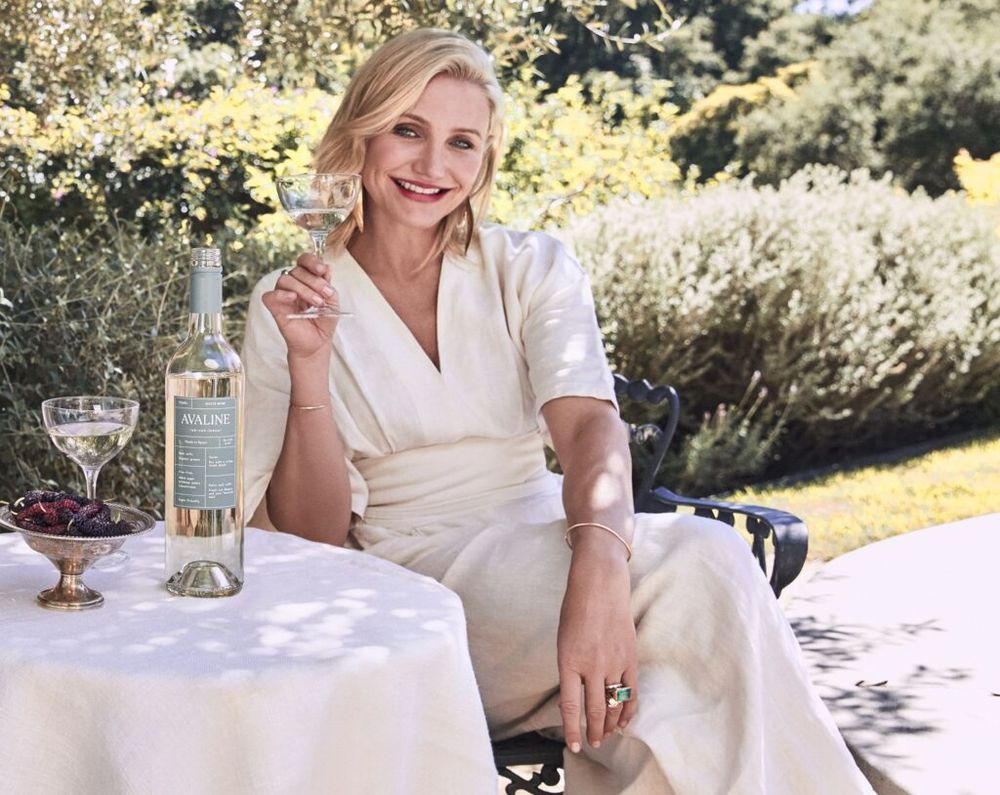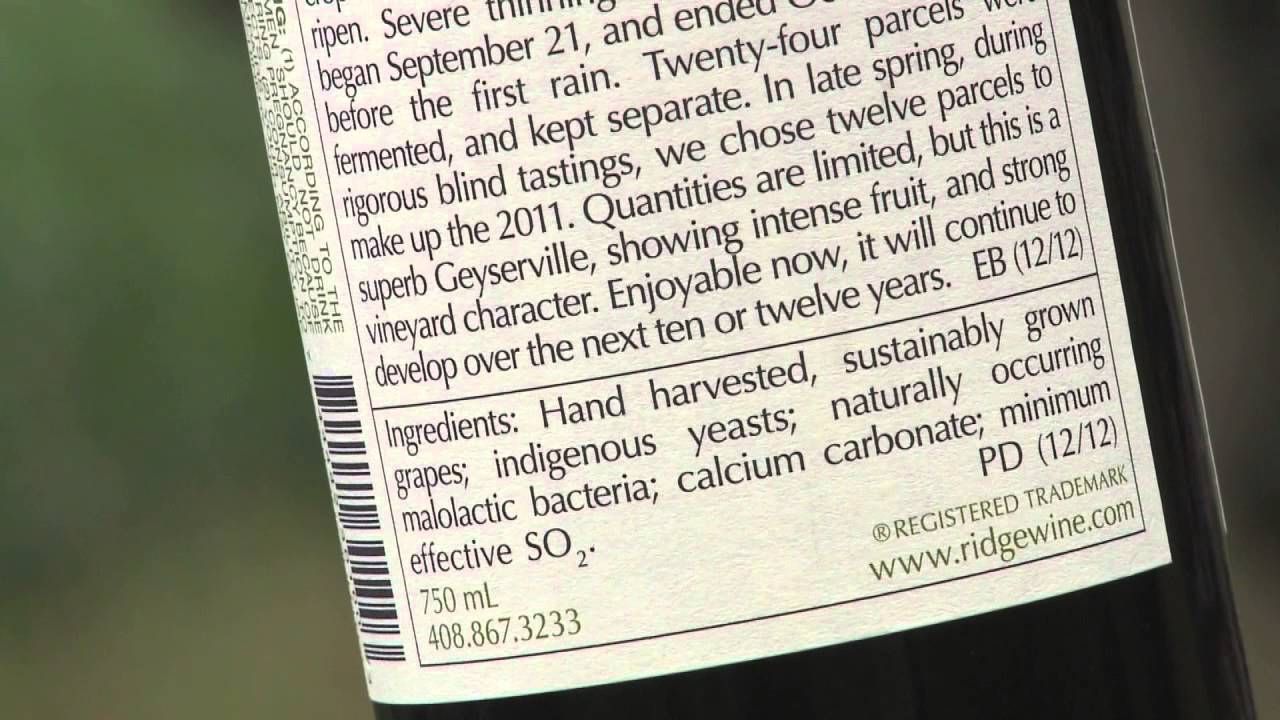Where do you stand on providing more ingredient information on wine labelling? Ines Salpico is quite clear. The time has come for the wine industry to open up its ingredient information.
‘Clean wine’ was, quite infamously, one of the industry’s new catchphrases in 2020. Dismissed by most as a misleading marketing stunt devoid of substance or any understanding of the actual products it referred to, it perhaps catalysed a much-needed debate on standards, transparency and how the industry is communicating to consumers.
Wine has remained puzzlingly immune to the same strict labelling requirements of other foodstuffs. So far this might have been perceived as an achievement of defensive lobbying from industry stakeholders, but is it perhaps alienating a new generation of consumers that the industry desperately needs to engage with in order to survive.

Actress turned wine producer Cameron Diaz threw the cat amongst the pigeons with the launch of her so called ‘Clean’ wine that makes claims about the ingredients in her wine that its marketing suggests other producers are unwilling to make
The historical resistance to provide clear details on the processes and ingredients used for the production of commercial ‘fermented grape juice’ has arguably contributed to two of the biggest challenges that wine faces today, both as a product and as an industry: to capture a new generation of regular drinkers; and to fight the impact that the ‘no-lo’ category – and associated health claims – is having on drinking habits.
These topics have long been discussed, not without frictions and highly polarised views, along industry corridors. The ongoing disruptions that the trade is experiencing, not least the role of ‘influencers’ and the many claims for and against alcohol consumption, have accelerated an inevitable and essential debate.
Raised debate
The subject was brought to the forefront earlier this month at the ‘Labelling and Transparency’ webinar, hosted by the Institute of Master of Wine and moderated by Pedro Ballesteros Torres MW. A diverse panel shared views from multiple perspectives and shed some light on changes to come.
Jancis Robinson MW described her long-time bafflement at the opacity of wine labels and called for an urgent change in standard labelling practices. Richard Bampfield MW seconded her view.

The Co-op was praised by Richard Bampfield MW for how it has been open about the ingredients that go into its wines
He was able to show labels from Californian producer Ridge, and UK retailer, the Co-op that thoroughly label all the ingredients in the wines they produce and sell. But consumers shouldn’t need, argued the panel, to rely on individual initiatives such as these.
Detailed labelling should instead become the new regulated norm, as seen on most other products lining supermarket shelves. Would excessive detail be overwhelming? Would consumers be put off by reading information they simply do not understand? Well, thorough labelling doesn’t stop people from buying their cookies, Robinson pointed out.
Robinson also mentioned that indication of nutritional value would be equally relevant, namely as so many consumers follow low-calorie diets and see this as fundamental information guiding their purchasing decisions.
A proposal for mandatory indication of the list of ingredients and the nutrition declaration on alcoholic beverage labels before the end of 2022 is indeed part of Europe’s Beating Cancer Plan, released on February 3 by the European Commission.
Dr Ignacio Sanchez Recarte, secretary general of CEEV, announced that the association is working on a e-labelling system that would allow consumers to easily access full details on each wine, in multiple languages, simply by scanning a QR code. He admitted that producers have long resisted the enforcement of detailed labelling due to the logistical challenges this would impose on bottling lines.
But with technology now allowing for the issue to be tackled with less operational disruptions, many producers are actually embracing the opportunities this opens (such as the possibility to easily engage with consumers in multiple languages). And with legislators already calling for mandatory labelling requirements, the implementation of an e-labelling system might be all but inevitable.

Why Ridge takes wine labelling so seriously
An opportunity not threat
Wine has been able keep itself at the margins of a basic consumer right: knowing the full list of ingredients and allergens present in a product. A strategy that might be backfiring. The discussion made it clear that greater transparency needs to be seen as a key opportunity rather than a threat.
Transparency will engage a generation of consumers that is data-driven, data-hungry and very sceptic about products without full traceability. It will also help the industry’s legitimacy, thus preventing it from becoming ‘the new tobacco’, a perspective that looms large, further making the case for a legal framework that brings wine closer to agri-food products and further from ‘intoxicating substances’.
What’s at stake is not merely a question of whether consumers are being given the information they feel they need. What’s on the table is the survival of the wine industry itself and its capacity to to engage with a new generation of drinkers for whom clarity of information is key.
It was perhaps this need for clarity that the ‘clean wine’ phenomenon so sensitively tapped into. By keeping labels bare, producers not only suggest they might have something to hide but also leave the path open for misleading and abusive marketing claims. In an age when consumer confidence is built upon engagement, data and effective storytelling it is perhaps time for the industry to act voluntarily and proactively, rather than waiting for legislators to step in.
- Having trained as an architect and worked as a sommelier, Ines Salpico is the wine club director at Wanderlust Wine and is also a wine writer and consultant. She is a freelance contributor to Harpers, Decanter and other industry publications.
































